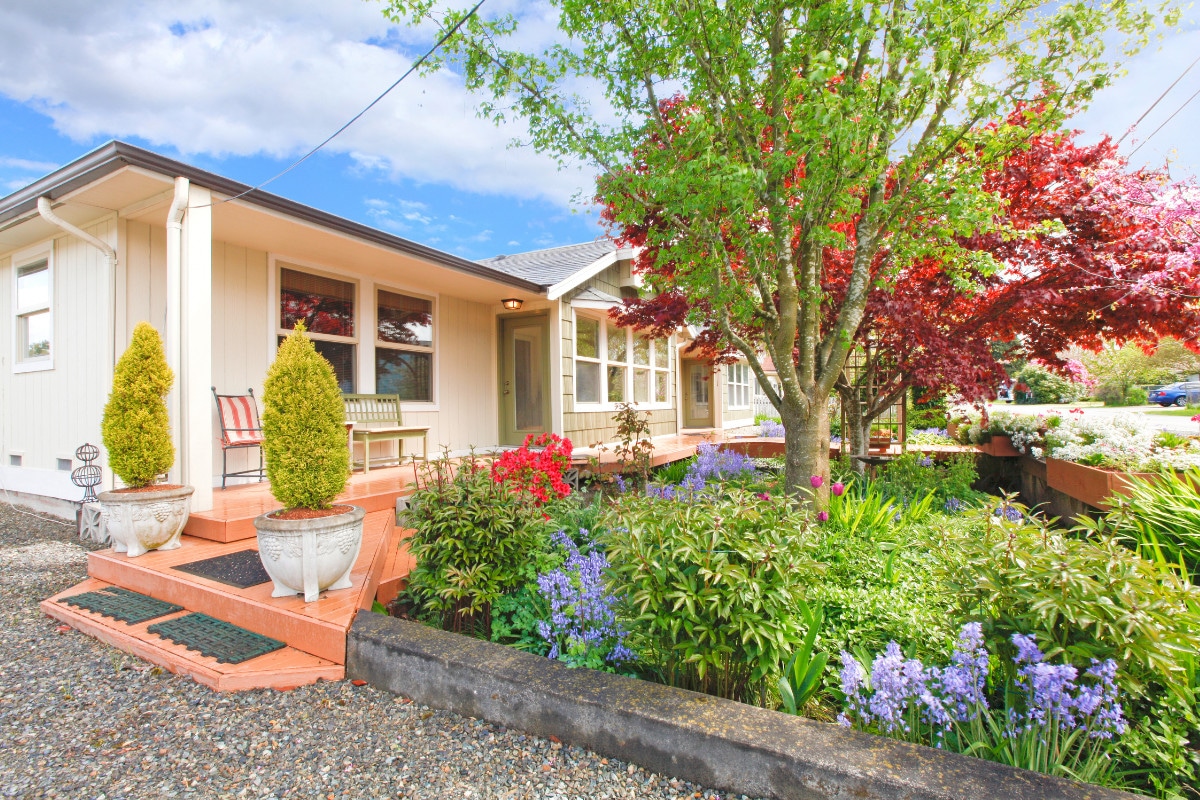The process of buying a home can be an exciting yet overwhelming experience. From the moment you step through the front door, you’re bombarded with various features and aesthetics that can either captivate your imagination or distract you from more essential considerations. Some house hunters are open to a renovation project, while others are looking for something that is move-in ready.
While it’s easy to be swept away by the charming decor and freshly painted walls, it’s crucial to look beyond the cosmetic features that catch your eye. Whatever your comfort level is with home renovations, there are many cosmetic details in a home that should be overlooked so you can envision the home you hope to call your own.
We’re outlining some of the core cosmetic features that you should overlook when buying a home, and exploring the more substantial aspects that truly matter.
Consider Your Budget
First and foremost, before beginning the house hunting process, you should have a firm idea of the budget you have available for any renovations you’re willing to make to your new home. Renovations can become very costly, so it’s good to know where you stand for making your home the place you want to come home to at the end of the day.
While some people need a move-in ready house, others are willing to make updates to a house to make it their own. By getting a general idea of the various costs associated with home renovations, you’ll be able to make a decision on which home to buy knowing that it fits within your financial constraints.
Many house hunters will already know the cost of renovating a home if they’ve had to do these projects before, but new house hunters will need to make a more thoughtful outline of the costs that home renovations require.
1. Paint and Wallpaper: Surface Appeal vs. Structural Integrity
A fresh coat of paint can undoubtedly breathe new life into a room, but it’s important not to make your decision solely based on color palettes. Paint and wallpaper are some of the most easily changeable elements in a home. Walls can be repainted to match your personal style, and wallpapers can be removed or replaced to suit your taste.
While the current color scheme might be a turn-off, remember that these cosmetic features are a temporary aspect of the house. Pay more attention to the overall condition of the walls – are there any signs of water damage, cracks, or structural issues? It’s wise to prioritize the structural integrity of the home over the initial aesthetics.
2. Flooring: Beyond the Surface
Flooring is another feature that often captures a buyer’s attention. The type of flooring, whether it’s hardwood, carpet, tile, or laminate, can contribute to the overall feel of the space. However, the focus should be on more than just the surface.
Keep in mind that flooring can be changed relatively easily albeit expensive at times. What truly matters is the condition of the subfloor and the foundation beneath. Is the flooring level and well-maintained? Are there any signs of water damage or wear and tear that could indicate deeper issues? Aesthetics aside, the quality of the flooring’s foundation is what will provide long-term durability and comfort.
3. Light Fixtures and Hardware: Swapping Out for Style
The allure of elegant light fixtures and stylish door handles is undeniable. Yet, these features are among the most easily replaceable aspects of a home. Lighting fixtures and hardware can be updated with minimal effort and cost, allowing you to customize the space to your liking.
Instead of letting these cosmetic elements guide your decision, focus on the layout and flow of the rooms. Consider how natural light enters the space and whether the room’s configuration suits your needs.
4. Kitchen Appliances: Functionality Over Fashion
A modern, state-of-the-art kitchen with high-end appliances can be a showstopper, but remember that functionality trumps aesthetics. While the appearance of appliances can influence your perception of the kitchen, it’s essential to assess their functionality and condition.
Kitchen appliances, just like any other appliances, have a lifespan. Check their age and maintenance history. Consider the layout of the kitchen – is it efficient and well-designed for your cooking habits? Ultimately, the appliances’ quality and layout are what will impact your day-to-day life in the kitchen.
5. Landscaping and Curb Appeal: Potential for Transformation
Curb appeal is often the first impression a house makes, but it’s important not to judge a property solely based on its landscaping. A beautifully landscaped yard can enhance the exterior, but it’s crucial to look beyond the current state. Landscaping can be time-consuming and costly to maintain.
However, it’s also one of the most changeable aspects of a home. With dedication and investment, an overgrown or neglected yard can be transformed into a stunning outdoor space that suits your preferences. Instead of focusing on the current landscape, consider the yard’s size, location, and potential for your outdoor activities and hobbies.
6. Window Treatments: Privacy and Practicality
Elegant curtains and blinds can frame windows beautifully, but the absence of window treatments should not discourage you from considering a property. Window coverings are a relatively easy addition that can provide privacy and shade. What truly matters is the placement and size of windows.
Consider how well they allow natural light into the room and whether they provide views that align with your preferences. Additionally, assess the windows’ energy efficiency and insulation properties, as these factors can impact your long-term comfort and utility costs.
7. Wall Finishes: Personalizing Your Space
Whether it’s textured walls, intricate wallpaper, or outdated paneling, remember that wall finishes are not set in stone. These cosmetic features can be updated or removed to match your personal style.
Rather than being swayed by the current wall finishes, pay attention to the layout, size, and functionality of the rooms. Imagine how your furniture and belongings will fit within the space, and consider whether the room’s layout suits your lifestyle and needs.
8. Bathroom Tiles and Fixtures: Form vs. Function
Bathroom aesthetics often play a significant role in a buyer’s perception of a home. However, it’s important to prioritize functionality over appearance. The condition of plumbing, the layout of the bathroom, and the potential for expansion or renovation should take precedence.
While tiles and fixtures can be updated to suit your style, the core elements of the bathroom, such as the plumbing system and layout, are more challenging and costly to modify. Focus on the bathroom’s functionality and how well it aligns with your daily routines.
9. Closet Organization: Adapting to Your Needs
Customized closet systems and storage solutions can give the illusion of a well-organized home, but they should not be the sole factors driving your decision. Closet organization can be tailored to your preferences over time.
Instead, pay attention to the amount of storage space available and the overall layout of the rooms. Consider whether the home provides adequate storage for your belongings and whether the layout suits your organization habits.
10. Interior Decor: Your Personal Canvas
As you tour different homes, you might encounter a range of interior decor styles – from traditional to modern, minimalist to eclectic. However, it’s important to remember that interior decor is highly personal and easily customizable.
The current owner’s decor choices should not cloud your judgment of the property’s potential. Visualize the space with your belongings and style, and consider how well the layout and features align with your vision for the home.
Conclusion
Buying a home is a significant investment that involves careful consideration of numerous factors. While cosmetic features can capture your attention, it’s essential to look beyond the surface and focus on the more substantial aspects that will impact your long-term satisfaction. Paint colors, flooring types, light fixtures, and other cosmetic elements can be changed relatively easily. Your real estate professional may have resources to help you with these items.
Instead, prioritize the structural integrity, layout, functionality, and potential for customization of the property. Having the property inspected by a licensed home inspector will be an important part of the process. By taking a holistic approach to your home search, you’ll make an informed decision that aligns with your lifestyle and future needs. Remember, a beautiful exterior might catch your eye, but a well-built and functional interior will provide lasting comfort and happiness for years to come.

